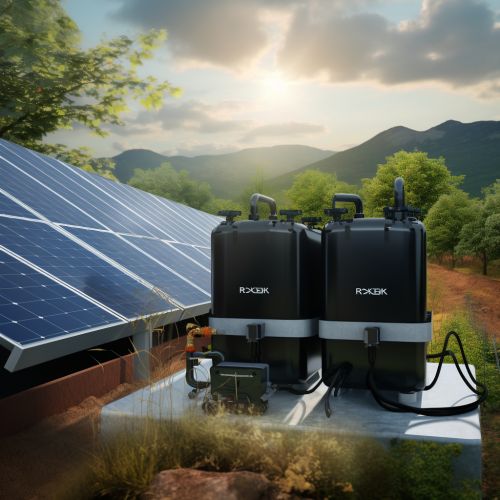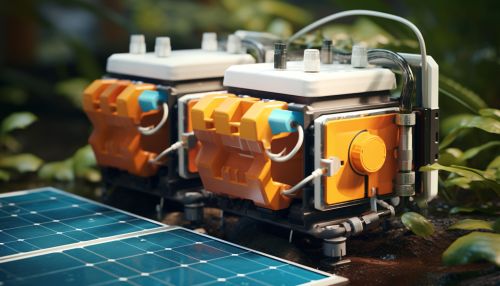Redox Flow Batteries for Energy Storage
Introduction
Redox flow batteries (RFB) represent a type of rechargeable battery where energy is stored in two chemical components dissolved in liquids contained within the system and separated by a membrane. This technology offers significant advantages for continuous and long-duration electrochemical energy storage, due to its flexible design, high safety, high energy efficiency, and low environmental impact.


Principle of Operation
The operation of a redox flow battery is based on the redox (reduction-oxidation) reactions of the active species in the electrolyte. The electrolyte is typically a solution of metal ions, which can undergo reduction (gain of electrons) at the cathode and oxidation (loss of electrons) at the anode during charging and discharging cycles. The energy storage and power delivery of the system are decoupled, which is a unique characteristic of redox flow batteries. This means that the energy capacity is determined by the total amount of electrolyte (and active species) in the system, while the power output is determined by the size and number of electrochemical cells.
Types of Redox Flow Batteries
There are several types of redox flow batteries, which are classified based on the active species and electrolyte used. The most common types include:
- Vanadium redox flow batteries (VRFB): These use vanadium ions in different oxidation states as the active species in both half-cells, which eliminates the problem of cross-contamination through the membrane.
- Iron-chromium redox flow batteries (Fe/Cr RFB): These use iron and chromium ions as the active species, which are abundant and environmentally friendly.
- Zinc-bromine redox flow batteries (Zn/Br RFB): These use zinc and bromine as the active species, which allows for high energy density but also introduces challenges related to the management of the bromine.
- Organic redox flow batteries (ORFB): These use organic molecules as the active species, which can be engineered for high performance and sustainability.
Advantages and Challenges
Redox flow batteries offer several advantages for energy storage, including flexibility in design, high energy efficiency, long cycle life, and low environmental impact. However, they also face challenges such as low energy density, high cost, and the need for advanced materials and system management strategies.
Applications
Redox flow batteries can be used in a variety of applications, including grid storage, renewable energy integration, backup power, load leveling, and peak shaving. They are particularly well-suited for long-duration storage applications due to their ability to store large amounts of energy and deliver it over extended periods of time.
Future Directions
Research and development efforts in the field of redox flow batteries are focused on improving the performance, reducing the cost, and enhancing the sustainability of these systems. This includes the development of new active species and electrolytes, advanced materials for the membrane and electrodes, and innovative system designs and management strategies.
